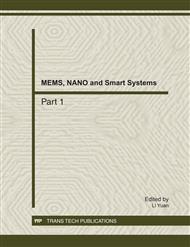p.4873
p.4880
p.4888
p.4893
p.4901
p.4910
p.4918
p.4926
p.4934
Robot Dancing: What Makes a Dance?
Abstract:
In this paper, we investigate the mechanics of dance for humans that can be applied to robots, in an attempt to make dancing robots learn the fundamentals of dance, and improve their dancing. We provide a conceptual definition of ‘dance’ and ‘movement’ to make robot dancers form their own movements to music. We used a virtual robot dog to experiment on our conceptual definitions, and human subjects to give their feedback on the robot’s dancing. Experimental results show that the robot learns (using reinforcement learning) our conceptual definition of ‘dance’ and that a dance that has structure and fundamental joint movements, improves the dancing.
Info:
Periodical:
Pages:
4901-4909
Citation:
Online since:
November 2011
Authors:
Keywords:
Price:
Сopyright:
© 2012 Trans Tech Publications Ltd. All Rights Reserved
Share:
Citation:


